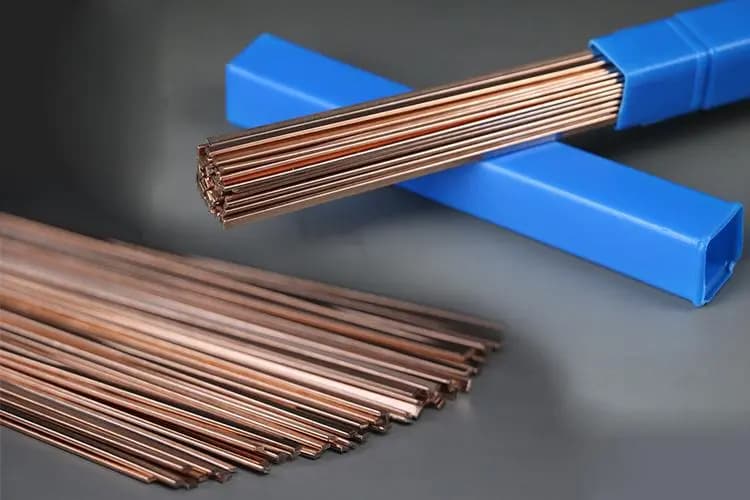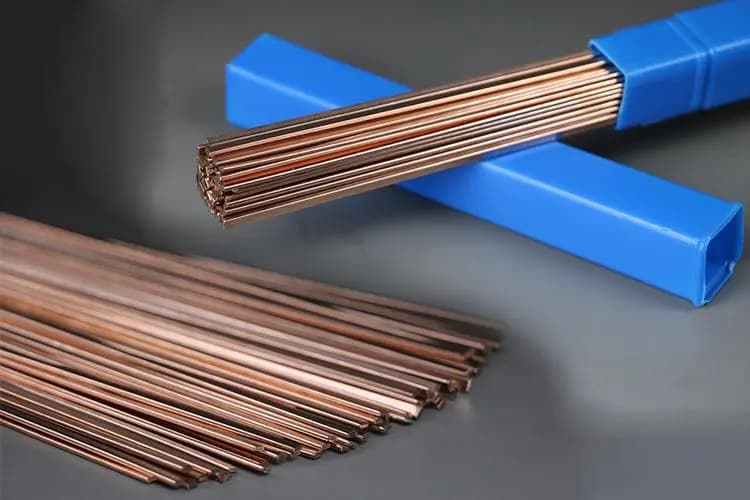To determine the use of welding rods, a common method used in practice is to calculate the weight of the weld metal and then divide it by the efficiency of the welding material.
It is necessary to calculate the efficiency of welding materials. However, because the diameter of welding rods and wires is different, the efficiency also varies greatly.

For industry, accurately calculating the utilization rate of welding materials can help reduce unnecessary waste in welding.
According to the experience of welders, the utilization rate of welding wire is higher than that of welding rods.
Some industries have a specific table recommended for calculating the weight of welding materials, which is generally divided based on the size of the groove and the amount of welding materials required per meter for a given number of groove degrees (in this case, the rate usage is normally included).
If this information is available, you can create a spreadsheet, a formula and fill it in every time.
It is crucial to correctly estimate the demand for welding rods during welding construction. If the estimate is too high, there will be excess inventory, but if the estimate is too low, the project budget will be insufficient and may even impact the normal progress and quality of the project.
Several methods are mainly used to calculate the consumption of welding rods:
Direct Calculation: This method is the most direct. It is first necessary to calculate the weight of the welding metal, and then divide this weight by the utilization rate of the welding material to determine the consumption of the welding rod. This method is mentioned in several sources, highlighting its ubiquity and practicality.
Formula Calculation: Based on the given formula, the welding rod consumption can be calculated using parameters such as weld cross-sectional area, weld length and deposit metal density. The specific formula is detailed in the article below.
Standard Quota Method: This method involves referencing the consumption quota standards of welding materials. These standards are typically expressed in units of weight of welding material consumed per meter of weld (i.e. kg/m3) and are chosen based on the type of welding rod used (such as basic or acidic welding rods).
Considering flux mass coefficient and welding rod transfer coefficient: For ironless powder type arc welding, welding rod consumption is related to its flux mass coefficient, transfer coefficient and weld area . These coefficient values vary for different types of welding rods, and specific values can be found in the relevant materials provided by the manufacturer.
Welding Rod Consumption Formula
The consumption of welding rods is mainly determined by factors such as joint type, groove type, weld length and other characteristics of the welding structure.
Here are some calculation formulas:
A) The formula for calculating electrode consumption is as follows:
m = A*L*ρ/1 – K S
Where
- m — Consumption of welding rod (g);
- A — Cross-sectional area of the weld (cm 2 ); (See Table 1)
- L — Weld length (cm);
- ρ — Density of the deposited metal (g/cm 3 );
- K is — electrode loss coefficient,
B) The other is the calculation formula of non-ferrous powder electrode consumption:
m = ALρ/Kn * (1+Kb)
Where,
- m — Consumption of welding rod (g);
- A — Cross-sectional area of the weld (cm 2 ); (See Table 1)
- L — Weld length (cm);
- ρ — Density of the deposited metal (g/cm 3 ):
- Kb — Coating quality coefficient, see table below:
- Kn — Metal transfer coefficient from electrode to weld (including loss due to burning, spatter and electrode tip)
For example :
1. The steel plate with a known thickness of 20mm has a V-shaped groove, the welding length L is 3m, and the welding rod is 5015. How to calculate the welding rod consumption?
(According to the table, the sectional area of deposited metal A=250mm 2 the density of steel ρ= 7.8g/cm 3 conversion coefficient Kn = 0.79, electrode coating weight coefficient Kb = 0.32 .)
Solution: known sectional area of the deposited metal A=250mm 2 steel density ρ= 7.8g/cm 3 transfer coefficient Kn=0.79, Kb=0.32, L=3m.
From the formula:
l rod = ALρ(1+Kb)/1000Kn = 250mm 2 ×3m×7.8g/cm 3 (1+0.32)/(1000×0.79)=9.77kg
Answer: The welding rod consumption is 9.77 kg.
2. Manual arc welding is used to weld a 10m carbon steel fillet weld. The electrode diameter is Φ4.0 and the fillet size is 10 mm. How many electrodes are needed? (Welding rod deposition rate is 55%)
Welding material requirement W= D/η=1.2ALρ/η
A=10*10/2=50mm 2 L=10m, ρ=7.8*10 3 /kg/m 3 η=55%
Therefore, W=1.2*(50*10 -3 )*10*7.8*10 3 /55%=8.509kg≈8.5kg
Answer: An 8.5 kg Φ4.0 welding rod is required for this weld.
Table 1 Sectional Area of Metal Deposited by Weld
| NO. | Weld name | Type and size of welded joint and groove/mm | Calculation formula |
| 1 | Single side I-beam weld | ||
| two | I-shaped weld | ||
| 3 | V-shaped weld (no back welding) | ||
| 4 | Single-side V-shaped weld (no back welding) | ||
| 5 | U-shaped weld (no back welding) |  |
|
| 6 | Back seal weld without root protrusion on V-shaped and U-shaped weld root | ||
| 7 | V-shaped and U-shaped root welds |  |
|
| 8 | Retain V from steel backing plate |
Table 2 Electrode coating Kb weight coefficient
| E4303 | E43015 | E5015 |
| 0.77 | 0.77 | 0.79 |
Table 3 Electrode transfer coefficient Kn
| E4303 | E43015 | E5015 |
| 0.42-0.48 | 0.42-0.5 | 0.38-0.44 |
What are the specific values for the welding rod flux quality factor and transfer coefficient?
The quality factor (Kb) of electrode flux generally ranges from 25% to 40%. The transfer coefficient (Kn) from the welding electrode to the weld, which includes combustion and spatter losses, is about 5% to 10%, and the loss from unused welding electrode heads is about 10% to 15%.
Therefore, the transfer coefficient is generally set between 0.75 and 0.85.
What are the consumption differences between different types of welding rods (such as alkaline rods and acidic rods) in practical applications?
The differences in consumption of different types of welding rods in practical applications are mainly reflected in the following aspects:
Welding material selection principles:
The materials consumed during welding (including welding rods, welding wire, etc.) are chosen based on the chemical composition of the deposited metal. This means that different types of welding rods may have different consumption amounts due to their different flux types and types of welding power sources.
Composition and characteristics of welding rod flux:
Acid welding electrodes and alkaline electrodes have different components in their flux, which leads to different performances during the welding process. Acid welding rod flux contains various oxides, which have strong oxidizing properties, while alkaline welding rods contain more silicates, iron oxides and titanium oxides, etc., and have weaker oxidizing properties. These differences can affect the amount of dust produced during welding, the stability of the arc and the fluidity of the slag, which in turn indirectly affects the consumption of welding rods.
Welding process performance:
Acid welding rods can be used for both AC and DC, with good welding process performance, stable arc, less spatter, good slag fluidity, easy slag removal and beautiful weld appearance. In comparison, alkaline welding electrodes, due to their specific chemical composition and flow characteristics, may require more attention and adjustments during the welding process, which may lead to relatively higher consumption under the same conditions.
Scope of application and production rate:
In recent years, with the widespread use of common low-alloy steel, the use of alkaline welding rods in welding has gradually increased. This indicates that as the application of specific types of steel increases, the consumption of corresponding types of welding rods (such as alkaline welding rods) will also increase correspondingly. At the same time, welding certain specific types of steel can lead to greater consumption of specific types of welding rods (such as E308H welding rods, which require a high chemical composition of the deposited metal).

























































